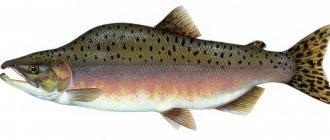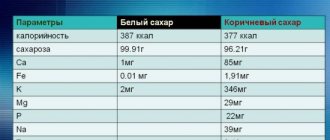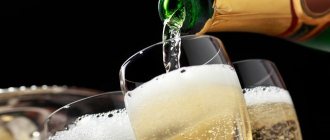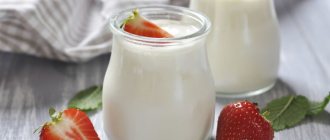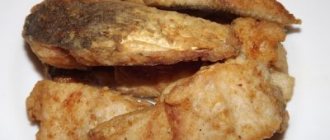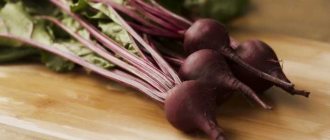Hello, in the next article about the calorie content of food we will tell you about honey. More precisely, we will answer the question of how many calories are in a teaspoon of honey. We know firsthand the benefits of this wonderful natural product. And if you want to find out more, read our article about the benefits of honey. Almost every person is worried about their figure, so it will be interesting for you to know the calorie content of one spoon of honey. Not everyone can boast of a figure and a healthy body, but the most important thing is proper nutrition. In order to find out how many calories are in one or two spoons of honey, you need to know the weight of a spoon of honey. You can read this in our article, how many grams of honey are in a spoon.
How much does honey weigh?
Honey comes in different consistencies and thicknesses. For example, a thick product that has already been candied will weigh less than liquid nectar.
Adds weight and moisture contained in the treat:
- collected in dry summer, in the absence of precipitation, it contains less than 15%! in (MISSING) lag;
- in the rainy season the amount of moisture will increase to 25%! and (MISSING) higher.
Humidity also depends on the variety:
- honeydew is drier and thicker, it contains more natural glue than water. This variety is the earliest to be candied;
- a liquid variety that is rarely seen candied because it contains a lot of water is the acacia product.
The average moisture content is 18%!/(MISSING)100 g of product.
Also find out what vitamins are contained in honey.
In one glass
The weight will depend on the thickness of the walls of the glass: the thinner the walls, the greater the volume and, accordingly, the weight. For example:
- a faceted glass holds up to 250 g;
- thin-walled of the same shape and size up to 330 g.
In one jar
Each product has its own specific gravity; one liter of a quality product weighs approximately 1.44 kg. For ease of calculation when converting liters to kilograms, this figure should be rounded to 1.5 kg. In order to convert one measure of weight to another, you need to multiply the desired volume by 1.5.
Based on the data obtained, it is easy to make calculations presented for convenience in the table:
| Can volume in liters | Honey weight in kg |
| 0,5 | 0,75 |
| 0,75 | 1,125 |
| 1,0 | 1,5 |
| 1,5 | 2,25 |
| 2,0 | 3 |
| 3,0 | 4,5 |
What does it depend on
Discussions about the nutritional value of honey and how many calories are in honey have been going on for a long time. The value is still heterogeneous; it has a certain dependence on a number of factors:
- Geography, place where bees collected honey
- Honey plant, the quality of its nectar
- Weather conditions in which the collection was carried out
- Climate
- Presence of other plants
- The structure of the soil where honey plants grow.
When collecting honey, it is necessary to take into account all factors that influence the quality of the product; the nutritional value is affected by the time of year and weather. It should be remembered that the less water in honey, the more carbohydrates it contains.
How many calories does bee honey have?
Calories are small and harmful creatures that can ruin the life, mood and self-esteem of any woman. Undoubtedly, in order to maintain a figure in good shape, you need to tirelessly monitor your diet. Let's figure out what is best to eat during a diet if you want something sweet?
Depending on the variety, the energy value of the bee product also differs. It's no secret that the calorie content of honey is in no way inferior to bread, condensed milk, beluga and beef.
Calorie content: 320 kcal; Fat: 0 g; Carbohydrates: 80.2 g; Proteins: 0.4 g.
The linden variety, as well as other flower species: sunflower, buckwheat, etc., contain no more than 380 Kcal per 100 grams, but the dark and tart meadow varieties have higher values, which can reach 415 Kcal. Despite the fact that the calorie content is simply off the charts, do not forget that all of it relates to the glucose contained as a result of the work of little bees, and not to sugar.
In 1 tsp.
One teaspoon can hold up to 8 grams of nectar. This amount of substance will contain 30 Kcal. There will be slightly more calories in a tablespoon than in a teaspoon, because it is larger in volume!
In Art. l.
A tablespoon can hold as much as 17 grams of bee nectar. According to rough estimates, the calorie content in this cutlery is 56 Kcal.
In 100 gr.
As we have already said, 100 grams of bee products can contain from 350 to 420 Kcal. This directly depends on the chosen variety of medicinal delicacy.
Honey diet: water with honey for weight loss
The honey diet is very simple and allows the consumption of any food, only the calorie content of the daily diet should not exceed 1200 kcal. The duration of the diet is one week, but if you feel well, you can follow it longer.
The main rule of the honey diet is to drink water with honey for breakfast and dinner for weight loss.
How to prepare a honey drink? You need to take one tablespoon of honey and dilute it in half a glass of warm, unboiled water. If desired, you can add a little lemon juice.
To lose weight, you need to drink water with honey in the morning on an empty stomach and about an hour before dinner. You need to drink the drink in one gulp, and after that it is recommended to perform an active physical warm-up (cleaning the house, walking the dog, etc.) This will help the honey enter the intestines, which will allow it to actively participate in the process of cleansing the body and speed up the metabolism.
Where are there more calories - in sugar or honey: comparison of the calorie content of honey and sugar
It is known that honey has a fairly high sweetness. And many are interested in the question, what is more nutritious – honey or regular sugar? Both products compared contain fructose and glucose.
But sweetness is provided by different components:
- sugar - sucrose
- bee honey - fructose
This fact affects the energy and nutritional value. So, the calorie content of 100 g of the described sweets is as follows:
- sugar – 390-400 kcal
- honey – 304-415 kcal
However, if you compare the number of calories contained in a teaspoon, the picture will look different:
- sugar – 19 kcal
- honey – 26 kcal
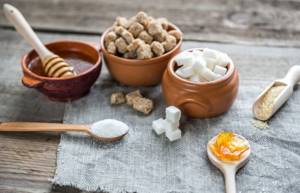
This is due to the fact that the density of bee nectar is higher than sugar. And the spoon holds a larger volume of honey. As you can see, the calorie content of honey and sugar is approximately the same. However, the choice in favor of a beekeeping product should be made due to the following factors:
- Bee nectar has a sweeter taste. Therefore, to give dishes or drinks a certain degree of sweetness, on average, approximately 2 times less honey is required than sugar. Thus, our body will receive fewer calories.
- Due to the fact that honey is an easily digestible product, the calories it contains are absorbed by our body much faster than those contained in sugar.
- According to nutritionists, the daily sugar intake for a person is 30 g, or 3-4 tsp. While bee honey can be eaten up to 100 g per day without harm to yourself (for children up to 50 g)
- By consuming this delicacy, you bring great benefits to your health, enriching your body with a whole range of valuable healing components
- The natural product in question helps speed up metabolism, which affects calorie burning
- It is known that the higher the glycemic index (GI) of a product, the more likely it is to gain excess weight. The GI of honey is lower than that of sugar
- When we consume sugar, our intestines have to break down sucrose into fructose and glucose before they enter the bloodstream. At the same time, the pancreas works in an enhanced mode to produce insulin, which has an adverse effect on the body
Using a Refractometer to Test Honey
More important than calories: the healing properties of the product and contraindications for use
Of course, the calorie content of honey is quite high, but if there are no contraindications, it cannot be excluded from the diet - the health benefits of the product have long been scientifically substantiated and proven by numerous studies. Its moderate consumption in recommended quantities will help strengthen the immune system, cope with increased emotional, mental or physical stress, get rid of chronic fatigue and minimize the harmful effects of stress and unfavorable environmental conditions on the body.

In addition, the gift of nature is not inferior to traditional medicines in its effectiveness in the fight against many diseases. It is recommended for use for the prevention and treatment of:
- diseases of the cardiovascular system;
- diseases of the gastrointestinal tract;
- colds and viral infections;
- stomatitis and gingivitis;
- pharyngitis, laryngitis, bronchitis;
- increased nervous excitability.
Flower, linden, buckwheat or any other honey is an excellent way to cure a sore throat and cough without resorting to medications - in combination with warm milk or tea, it soothes the mucous membrane of the larynx, speeds up and facilitates the evacuation of mucus from the lungs. This method of treatment with honey milk is suitable for expectant mothers in the early stages of pregnancy, when most pharmacological drugs are prohibited for use.
It is worth noting that a big mistake is drinking honey with very hot tea or milk: when heated above 50 degrees, the product irrevocably loses most of its healing properties. For the treatment to be as effective as possible, the milk or tea in which you put the bee treat should be warm, but not hot.
However, like any medicine, this natural delicacy also has its contraindications for use. One of the main contraindications is the presence of an allergy to bee stings and/or bee products. In this case, the product will have to be excluded from the diet completely - even one teaspoon can provoke a severe allergic reaction.
People suffering from diabetes will also have to significantly reduce their consumption of the product. In this case, the calorie content of honey does not matter much: all varieties are sources of carbohydrates. In most cases, there is no need for diabetics to exclude the product from their diet, however, it is necessary to select the daily dose of consumption together with an endocrinologist and in no case exceed the established norms. Is natural honey high in calories? Without a doubt, it has high nutritional value, but if consumed adequately, it will not only not cause harm, but will also bring considerable health benefits. Buckwheat, floral, acacia, mustard, linden - choose the variety you like best and be healthy!
Calories per spoon
It is much more interesting to determine how many calories are in a tablespoon of honey or in one teaspoon. In order to determine the calorie content of honey in 1 spoon, one should proceed from the total energy value per 100 grams of product. For example, if light varieties of delicacy contain about 380 kcal, and a teaspoon contains 7–8 g, then the calorie content of honey in a teaspoon will be from 25 to 30 kcal.
One tablespoon holds about 10 g of product, so the number of kilocalories in it ranges from 30 to 35. Such calculations were made for a level spoon of honey. If the additional condition is added that the spoon is heaped, the calorie content increases, namely:
- Bee honey, calorie content 1 tsp. with a slide – 33 kcal;
- honey, kcal in 1 tbsp. with a slide – 73 kcal.
Tea with honey for weight loss
Some choose another way to lose weight with honey - drink tea with honey for weight loss. When preparing tea with honey, it is necessary to take into account that honey loses its biological properties if it is dissolved in hot water. Therefore, the recipe for making tea with honey for weight loss looks like this: brew two tablespoons of green tea (as it has fat-burning properties) and one tablespoon of fresh ginger root, pre-crushed, 300 ml of boiling water. Let the tea brew for at least half an hour, then add 1.5 liters of cold water and add one tablespoon of honey. Stir the tea thoroughly until the honey is completely dissolved.
It is recommended to take one glass of tea with honey before each meal. If you do not have stomach problems, you can take this tea between meals, instead of regular tea, but it is not recommended to heat it, again, to avoid losing the valuable qualities of honey.
Despite the high calorie content of honey, tea with it is considered by many to be very effective for weight loss, since green tea and ginger have fat-burning effects, and the beneficial properties of honey help to effectively fight extra pounds.
However, it should be noted that honey is a strong allergen. In addition, honey drinks should be used as an additional means for losing weight, and not as a substitute for diet and physical activity.
Calorie content
There are many types of propolis, each of which has its own taste, color, composition, nutritional value and nutritional value. Depending on the variety, honey will contain different calories.
- the average calorie content of honey in 1 level teaspoon is 32 kcal, thick candied honey with a slide is 45 kcal;
- calorie content of 1 tablespoon of honey without a slide is 108 kcal, with a slide - 154 kcal.
Among the popular varieties, the most high-calorie varieties are homemade linden (black) and honeycomb - 327 and 323 kcal per 100 g.
Calories in buckwheat and flower honey are around 300 kcal/100g.
Main characteristics of the product
The sweet product contains a huge amount of useful and, accordingly, necessary microelements for the body. Honey contains components such as fats, carbohydrates and proteins. This is known to anyone who has ever paid attention to a chocolate or candy wrapper. This meal includes:
- proteins;
- vitamins;
- beta-carotene;
- light oils;
- acids;
- glucose.
Due to the fact that the delicacy is obtained as a result of the interaction of bees with various plants, it has a special taste and varying amounts of fructose and glucose. The most delicious varieties of honey contain more fructose. If the product rapidly crystallizes, then sugar, glucose, dominates in it.
Depending on what kind of product is available (its age and variety), it contains different amounts of water. As a rule, the water content in honey is not higher than 22% of its total composition.
Benefits and calories
This sweet product and its properties have been known since ancient times . And now they breed bees and collect honey on farms, huge farms, and their own apiaries, just as they did in ancient times.
The product is a thick, viscous mass, most often transparent, which crystallizes after some time. Its taste is very sweet, cloying, the smell is pleasant with a specific aroma. Taste, color and smell depend on the species and flowers.
What colors are there:
- White almost transparent with a slight yellowish tint;
- Yellow;
- Light brown;
- Dark brown
This delicious product contains a large number of useful substances - vitamins B, C, H and PP. It contains almost the entire periodic table , micro- and macroelements: potassium, calcium, magnesium, zinc, selenium, iron, chlorine and sulfur, chromium and fluorine, cobalt, silicon, nickel, aluminum, nicotinic acid. Thanks to these vitamins and minerals, honey has a general healing and strengthening effect on body functions.
Honey also , which keep you alert and give you energy.
The presence of iron and manganese in honey increases hemoglobin levels and helps blood cells recover faster. The good thing about it is that it is completely absorbed by the body, releasing all the beneficial substances.
Buckwheat honey, flower honey, linden honey, dandelion honey, in combs, artificial: calorie content
As already mentioned, the calorie content of honey is largely determined by its type. It is believed that light varieties of this beekeeping product are lower in calories than its dark varieties. And they are even recommended for people suffering from diabetes.
The aroma and shade of honey depend mainly on the floral raw materials from which the bees collect nectar. The composition of this product is also influenced by phytoncides and pollen grains of specific honey plants. Honey collected by bees from one type of plant is called monofloral, and from different types - polyfloral. Each type of honey has certain properties.
Light varieties are characterized by:
- light taste
- delicate aroma
- higher digestibility
The characteristics of dark varieties are as follows:
- rich taste and aroma
- more microelements in the composition
- slower absorption by the body
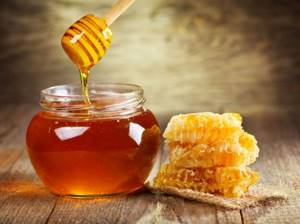
We present the following average calorie content of honey per 100 g of product, depending on its type:
- Floral (polyfloral) – 380-415 kcal. Bees collect nectar from various meadow, forest or mountain herbs. That is why such a product is rich in various components inherent in many types of plants. It is considered the most high-calorie.
- Linden – 325-350 kcal. Extremely useful for strengthening the heart muscle. In addition, during colds it helps remove mucus from the bronchi.
- Buckwheat – 305-315 kcal. This honey is one of the richest in micro- and macroelements. Its iron content is especially high. Calorie content is one of the lowest.
- In honeycombs – 330 kcal. When consumed, the body is additionally saturated with other healing components of beekeeping products: natural wax, propolis, and pollen.
- Dandelion – 350-380 kcal. Very fragrant, viscous, crystallizes quickly. This product should not be confused with dandelion flower jam, which is popularly called “honey”. This sweet contains dandelion blossoms, water, sugar, lemon juice and aromatic spices. The calorie content of this jam is about 195 kcal per 100 g.
- Artificial honey – 305-310 kcal. This is a food product made from sugar-containing raw materials (beet and cane sugar, grapes, watermelon, corn, melon), and is not the result of bee production. It is especially often used in the manufacture of confectionery products as a substitute for natural honey. This product does not have any medicinal properties.
It should be noted that it is almost impossible to collect a truly monofloral type of honey. After all, there may be other sources of nectar near the apiary, from where the bees collect it. In addition, during the pumping process, remnants of the old product may get into the fresh product. Therefore, the caloric content of bee honey varieties may vary.
But no matter what type of honey you choose, you will bring great benefits to your health. Just remember that this product can cause allergies. Therefore, it should be used with caution and in limited quantities.
How many grams of honey are contained in 1 spoon?
One of the first measures in the kitchen is a spoon, a teaspoon or a table spoon. Often in recipes, for convenience, the dosage of components is indicated in spoons, but not always. Therefore, it is advisable to know how to convert grams into spoons and measure the ingredient correctly.
Did you know? The ability of honey to retain its qualities for thousands of years was confirmed by archaeologists during excavations of the tomb of Tutankhamun. A vessel with nectar that retained its taste was found in the burial room.
Dining room
There are different ways to scoop a treat from a jar. Therefore, you need to consider the weight in the device with and without a slide.
Weight in 1 tbsp. l. in grams:
- with a slide -34-37;
- without slide -30-33.
Tea room
Small spoons are usually used to measure nectar for cosmetic recipes.
Product weight in 1 tsp. in grams:
- with a slide -14-19;
- without a slide - 9-12.
In the absence of scales, you can determine the dosage of the product using simple mathematical operations and cutlery - spoons.
Important! The measurement error, depending on the variety and consistency, will be from 5 to 10%!
For light weight it is better to use a tea room, otherwise a dining room:
- 50 g - 1 tsp measure is used for calculation. without a slide in grams, we get the following - 50/9 = 5.5 liters;
- 100 g - 100/9 (1 tsp) = 9 l;
- 150 g - then it is more convenient to take 1 tbsp as a measure. l. without a slide in grams -150/30 = 5 l.;
- 200 g - 200/30 = 6.6 l.;
- 250 g - 250/30 = 8.4 l.
Thus, 50 g of nectar is 5.5 tea spoons, and 250 g corresponds to 8.5 tablespoons.
Calorie content of honey
Natural honey varieties are conventionally divided into highly nutritious and moderately nutritious types. The division is quite arbitrary; no one can give exact figures due to variable factors affecting honey collection. The carbohydrates present in bee nectar can be compared to sugar from beets; their value is 398 kcal. The significant difference lies in the percentage of moisture, its normal value is 15-21 percent! A low-quality product, of course, can show completely different results, but it should not be on sale.
Bees collect various types of honey from various plants, differing in energy value.
Treatment of eye diseases with honey
Calorie content of monofloral varieties
- Minimum calorie content, 300 – 310. Varieties: cornflower, pumpkin, buckwheat, phacelia, citrus fruits, rapeseed, mustard, heather and many others.
- Average values, 311 - 320. Varieties: sunflower, sainfoin and camel thorn
- Maximum values from 321. Unique delicious varieties, such as: acacia, linden, akkurai, dimorphant, black maple.
Sugar or bee product
If this sweetness is not harmful during a diet and is quickly absorbed by the body, then the question arises, what is more nutritious, honey or sugar?
To this we can safely answer that the calorie content of a healthy treat is much lower than sugar. For example, in tsp. The beekeeping product contains about 30 kcal, and sugar - about 20. At first glance, it seems that sugar has less calories, but this is not so. In this case, this situation arises due to the fact that a spoonful of sugar contains much less than bee product. As already mentioned, per 100 grams of sweetness there are from 320 to 380 kcal, and sugar contains about 450 kcal.
It is worth considering that when it enters the body, the sweetness is absorbed quite quickly without being deposited in the fat layer. Sugar will take much longer to digest by the body, cause addiction, provoke a large appetite, and be deposited in fatty layers. In addition, sugar causes drowsiness and damages teeth.
Of course, such a delicacy also contains sugar, but it contains fructose and glucose, which are quickly broken down by organisms, and in addition, bring great benefits to humans.
When choosing between sticky sweetness and ordinary sugar, you should give your preference to honey, since it is recommended to eat it with proper nutrition, but in small quantities; the delicacy will not only bring pleasure when eaten, but will also “reward” with a large number of useful elements.
Is it possible to lose weight with honey?
The beekeeping product is effective in diet. It speeds up metabolic processes, improves digestion, and is also a source of energy. But before you start losing weight, it is recommended to study the composition of honey. The calorie content of different varieties of natural sweets varies, as was written above. This must be taken into account when choosing honey for your diet. Any type of sweet cleanses the human body, removing toxins and salts. Honey strengthens the immune system, improves the condition of the skin, nails, and hair. Those who are struggling with excess weight are recommended to drink honey-based drinks in the morning. And it’s better to do this on an empty stomach. It is recommended to consume 1 small spoon of the healing treat per day.



